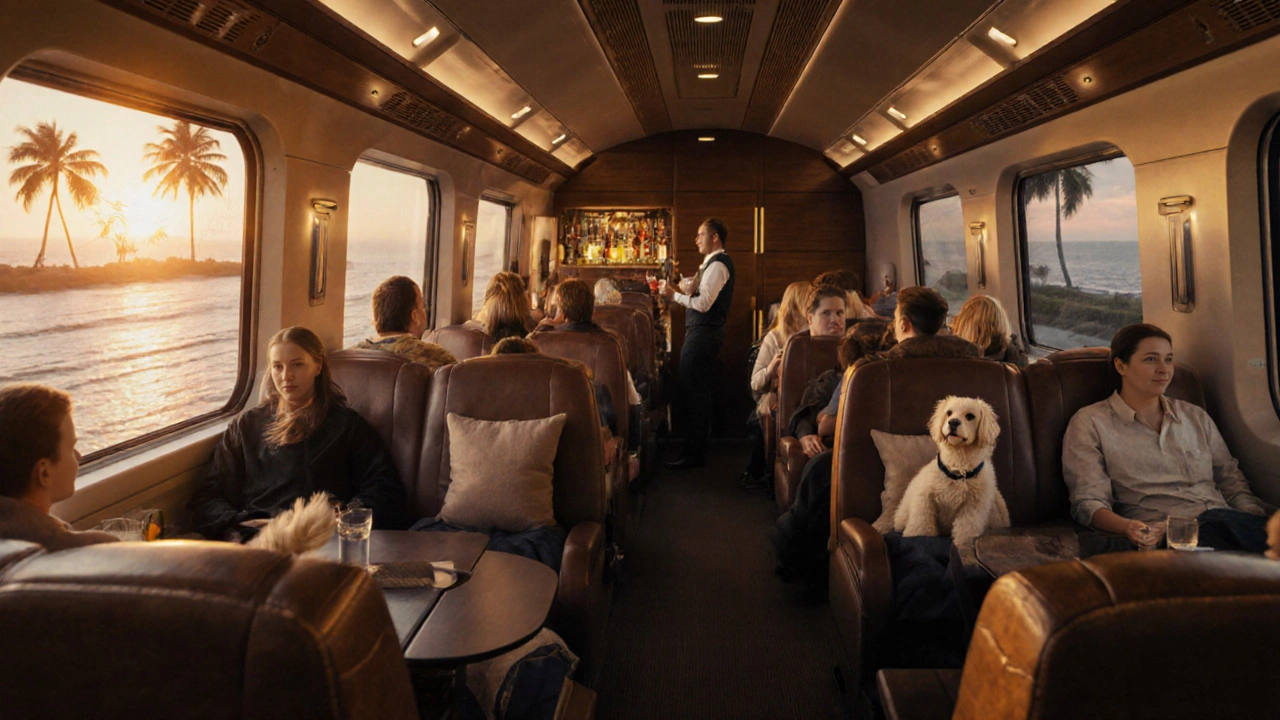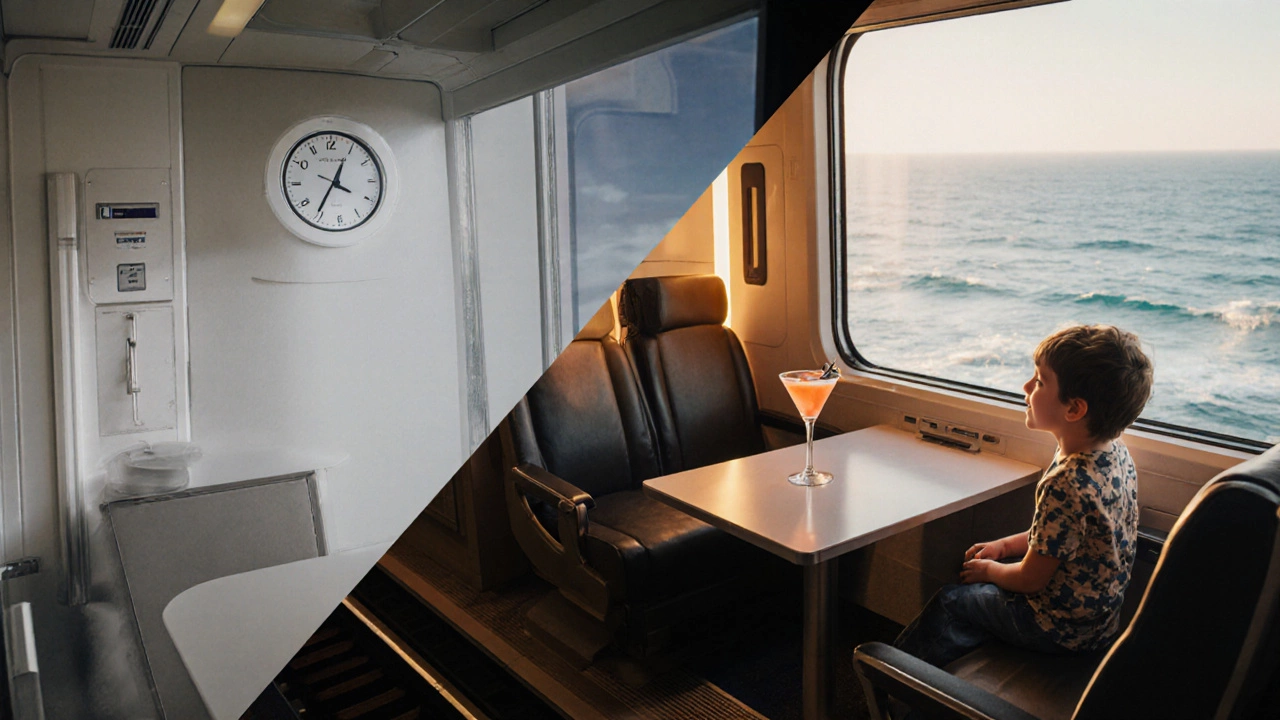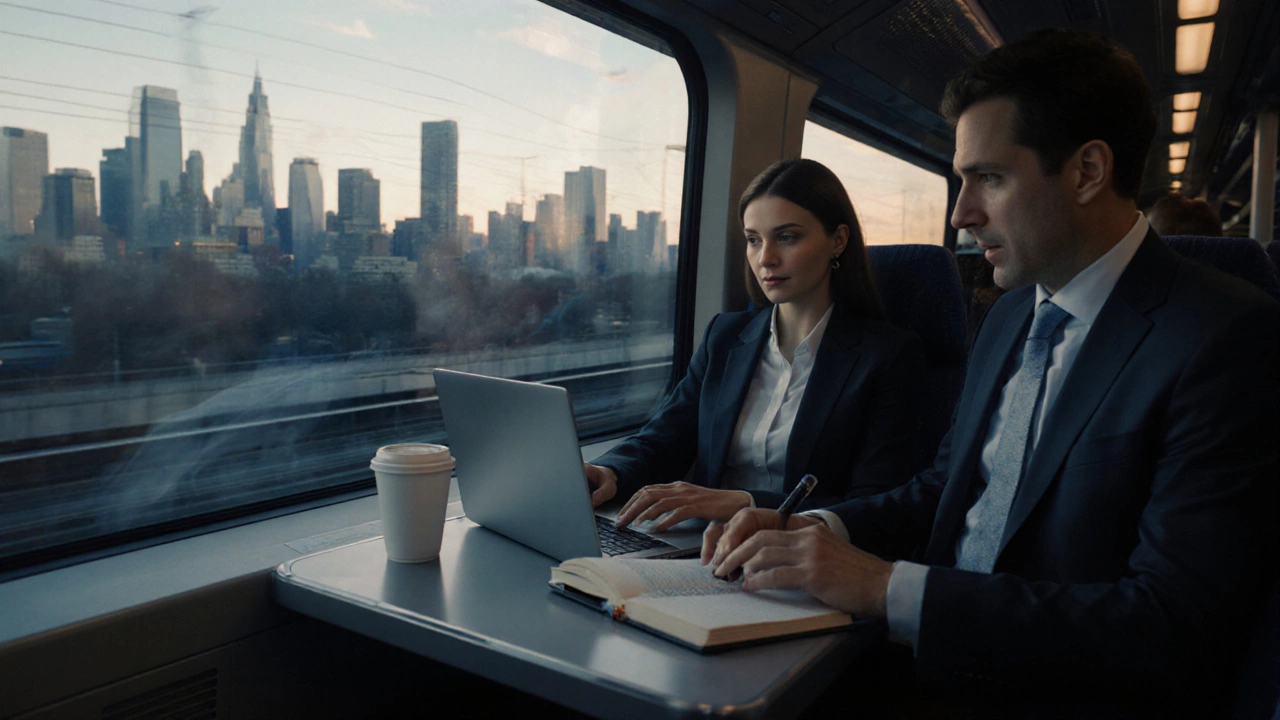Luxury Train Choice Calculator
Select your travel parameters below to find the best luxury train service for your needs.
If you’ve ever wondered why one train ride feels like a business trip and another like a weekend getaway, you’re not alone. Acela and Brightline both promise speed, comfort, and a step up from flying or driving-but they’re not the same. One runs along the Northeast Corridor, packed with commuters and corporate travelers. The other cuts through Florida, designed for vacationers who want to arrive relaxed, not exhausted. Understanding the difference isn’t just about schedules and tickets-it’s about what kind of travel experience you’re looking for.
Route and Geography: Where Each Train Goes
Acela doesn’t just connect cities-it connects economic powerhouses. It runs between Boston and Washington, D.C., stopping at major hubs like New York, Philadelphia, and Baltimore. This is the backbone of the Northeast Corridor, one of the busiest transportation corridors in the country. The route serves millions of business travelers, students, and tourists every year. If you’re flying into JFK or Logan and need to get to Manhattan or D.C. in under 3 hours, Acela is often the fastest option.
Brightline, on the other hand, is all about Florida’s coastal lifestyle. It links Miami, Fort Lauderdale, West Palm Beach, and Orlando, with a new extension to Tampa set to open in 2026. Unlike Acela, Brightline doesn’t compete with airports-it competes with traffic. Florida’s highways are notorious for congestion, especially between Miami and Orlando. Brightline cuts that drive from 4-5 hours down to under 3. It’s not about commuting to a job-it’s about getting to a resort, a theme park, or a beach house without the stress.
Speed and Performance: How Fast Do They Really Go?
Acela holds the title for the fastest train in the United States. On certain stretches, it hits 150 miles per hour, thanks to upgraded tracks and newer trainsets introduced in 2021. But those speeds are only possible on about 30% of its route. Most of the line, especially near urban areas and older infrastructure, limits it to 110 mph or less. Even so, Acela is still faster than driving or taking a bus between major Northeast cities.
Brightline doesn’t go as fast-its top speed is 125 mph. But it doesn’t need to. Its route is mostly new, purpose-built track with fewer curves and no grade crossings. That means it maintains higher average speeds over longer distances. The trip from Miami to West Palm Beach averages 75 mph, which is faster than most cars in rush hour. Brightline’s advantage isn’t top speed-it’s consistency. You’re not stopping for signals, traffic lights, or slow-moving freight trains.
Interior Experience: Comfort and Design
Acela’s interior is polished, professional, and functional. First Class seats recline, have power outlets, and come with complimentary meals and drinks. The cabins are quieter than older Amtrak trains, but the design leans toward corporate efficiency. You’ll see business travelers on laptops, students with textbooks, and tourists with rolling suitcases. The ambiance is clean, but it’s not meant to be luxurious-it’s meant to get you there on time.
Brightline’s design is where it really stands out. The trains have wide, plush seats with legroom you’d expect in first-class air travel. The lighting is warm, the materials feel premium-think leather, wood accents, and soft textiles. There’s a dedicated lounge car with a full bar, snacks, and seating that feels more like a hotel lobby than a train station. Even Standard Class has more space than most airlines. Brightline didn’t just upgrade seats-it rethought the entire experience. You’re not just riding a train; you’re in a mobile lounge.

Service and Amenities: What’s Included
Acela’s service is reliable but minimal. First Class includes a complimentary breakfast, lunch, or dinner depending on the time of day. You get coffee, wine, and snacks. Wi-Fi works, but it’s spotty in tunnels. Power outlets are available at every seat, and there’s a quiet car for those who want to work or sleep without interruptions.
Brightline takes service further. All tickets include complimentary Wi-Fi, snacks, and non-alcoholic drinks. First Class adds a full bar, hot meals, and priority boarding. The trains have dedicated attendants who walk the aisles, offering refreshments and answering questions. There’s even a pet-friendly car for travelers with small animals. Brightline also offers free parking at stations and a shuttle service to nearby hotels. It’s designed to remove friction from the entire journey-not just the ride.
Price and Value: Are You Paying for Speed or Experience?
Acela tickets can be expensive. A one-way First Class fare from New York to Washington, D.C. starts around $170 and can go over $300 during peak times. Standard Class is cheaper, but the difference in comfort is noticeable. You’re paying for speed, reliability, and access to a major transit corridor. It’s a practical choice for people who need to get somewhere fast and don’t mind a no-frills ride.
Brightline is more expensive than driving or taking a bus, but it’s often cheaper than flying when you factor in airport fees, parking, and taxi rides. A one-way ticket from Miami to Orlando starts at $89 in Standard Class and goes up to $169 in First Class. The value isn’t just in the seat-it’s in the time saved, the stress avoided, and the experience delivered. For tourists, it’s not just transportation-it’s part of the vacation.

Who Is Each Train For?
If you’re a business traveler between Boston and D.C., Acela is your best bet. It’s integrated into the region’s economy. You can hop on at 7 a.m., work during the ride, and be in a meeting by 11 a.m. It’s the rail equivalent of a corporate shuttle.
If you’re heading to Florida for a family trip, a romantic getaway, or even a weekend escape, Brightline is the better choice. It turns travel into relaxation. You can unwind with a cocktail, watch the coastline roll by, and arrive feeling refreshed-not like you’ve been stuck in a metal tube for hours.
The difference isn’t just in the trains. It’s in the culture of travel they represent. Acela is about efficiency. Brightline is about enjoyment.
What’s Next? Expansion and Future Plans
Acela’s future is tied to federal infrastructure funding. The next generation of trains, called the Avelia Liberty, is set to enter service in 2026. They’ll be faster, quieter, and more energy-efficient. But the route itself won’t change much-there’s little room for expansion in the Northeast’s crowded corridor.
Brightline is growing fast. The Tampa extension is confirmed, and there are talks of extending north to Jacksonville and even Atlanta. The company is also exploring partnerships with airlines to create seamless multi-modal trips. Brightline isn’t just a train-it’s becoming part of a larger transportation network.
For now, the choice between them comes down to where you’re going and what you want from the ride. One is a tool. The other is an experience.
Is Acela faster than Brightline?
Yes, Acela reaches higher top speeds-up to 150 mph-compared to Brightline’s 125 mph. But Brightline maintains higher average speeds because it runs on newer, uninterrupted tracks. Acela slows down in urban areas and older sections, while Brightline keeps a steady pace across Florida.
Which train has better seating?
Brightline offers more spacious, comfortable seating across all classes. First Class includes full recline, premium materials, and dedicated service. Even Standard Class has more legroom than most airlines. Acela’s seats are functional but more compact and business-oriented.
Can I bring food on both trains?
Yes, you can bring your own food on both. But Brightline includes complimentary snacks and drinks with every ticket, and First Class offers full meals. Acela’s First Class includes meals on longer routes, but Standard Class has no complimentary food-just vending machines and a café car.
Is Brightline worth it for tourists?
Absolutely. For tourists, Brightline turns travel time into part of the vacation. The comfortable seating, scenic views of Florida’s coastline, and relaxed atmosphere make it ideal for families, couples, and solo travelers. It’s a stress-free alternative to driving or flying.
Do both trains have Wi-Fi?
Yes, both offer free Wi-Fi. Acela’s connection can be inconsistent in tunnels and dense urban areas. Brightline’s Wi-Fi is more reliable because the route has fewer obstructions and newer infrastructure.
Which train is better for business travelers?
Acela is better for business travelers who need to move between major Northeast cities quickly. It connects directly to airports, hotels, and business districts. Brightline is more suited for leisure travel, though its quiet cabins and Wi-Fi make it viable for remote work too.
